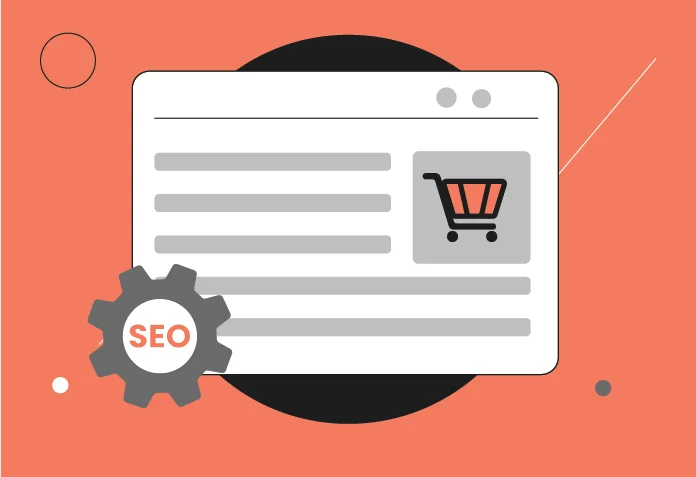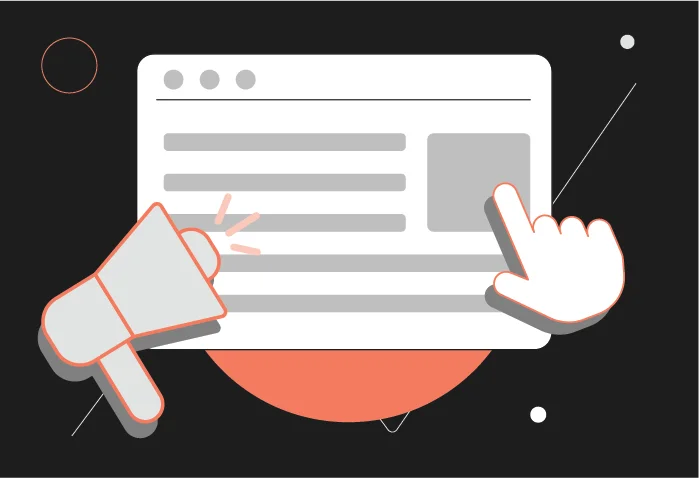Remember when launching an advertising campaign meant weeks of planning, expensive agency fees, and crossing your fingers that your creative would resonate with your target audience? Those days of uncertainty and massive upfront investments are rapidly becoming obsolete.
In 2025, artificial intelligence has fundamentally transformed how businesses approach advertising creation, optimization, and performance tracking. What once required teams of specialists and months of development can now be accomplished by individual marketers in a matter of minutes. But this isn’t just about speed – it’s about precision, personalization, and performance that surpasses traditional advertising methods.
The revolution isn’t just happening in Silicon Valley boardrooms or Madison Avenue agencies. Small businesses, solopreneurs, and local service providers are using AI-powered advertising tools to compete directly with established brands, often outperforming them by leveraging agility and authentic brand storytelling enhanced by artificial intelligence.
The Traditional Advertising Bottleneck
Traditional advertising creation was plagued by inefficiencies that made it inaccessible to most small and medium businesses. The process typically involved multiple stakeholders, lengthy approval cycles, and substantial financial commitments before any testing could begin.
Creative development cycles often stretched for weeks or months. A single ad campaign required concept development, copywriting, design work, revision rounds, legal approval, and media planning. By the time campaigns launched, market conditions or consumer interests might have shifted significantly.
Testing limitations forced businesses to make large bets on untested creative concepts. Without the budget to test multiple variations simultaneously, most advertisers had to choose one approach and hope for the best. This led to significant waste in advertising spend and missed opportunities for optimization.
Expertise requirements created barriers for businesses without dedicated marketing teams. Effective advertising required understanding of psychology, design principles, copywriting techniques, and platform-specific optimization strategies. Small businesses often lacked access to this specialized knowledge.
Scale limitations meant that even successful small businesses struggled to expand their advertising efforts. Creating content for multiple platforms, audience segments, or geographic markets required proportional increases in time, budget, and team resources.
The AI Advertising Advantage
Artificial intelligence eliminates these traditional bottlenecks while introducing capabilities that weren’t possible with manual processes. The transformation goes far beyond simple automation—AI brings strategic intelligence to advertising creation that helps businesses make smarter decisions faster.
Instant iteration and testing become standard practice when AI can generate dozens of ad variations in minutes rather than weeks. This capability enables true optimization, where campaigns improve continuously based on real performance data rather than theoretical best practices.
Data-driven creativity combines human insight with AI analysis to identify messaging and visual approaches that resonate with specific audiences. Instead of guessing what might work, marketers can leverage AI’s pattern recognition to identify proven successful elements and adapt them for their unique context.
Platform optimization happens automatically as AI tools understand the specific requirements, audience behaviors, and algorithmic preferences of different advertising platforms. This knowledge ensures that creative content performs well within each platform’s unique ecosystem.
Scalable personalization enables small businesses to create targeted campaigns for different customer segments without proportional increases in workload. AI can adapt core messaging for different demographics, interests, or behavioral patterns while maintaining brand consistency.
Game-Changing AI Advertising Tools
The current landscape offers sophisticated AI tools that address every aspect of advertising creation and optimization. Understanding how these tools complement each other helps businesses build comprehensive advertising strategies that compete with enterprise-level campaigns.
Writecream: The Conversion-Focused Copy Engine
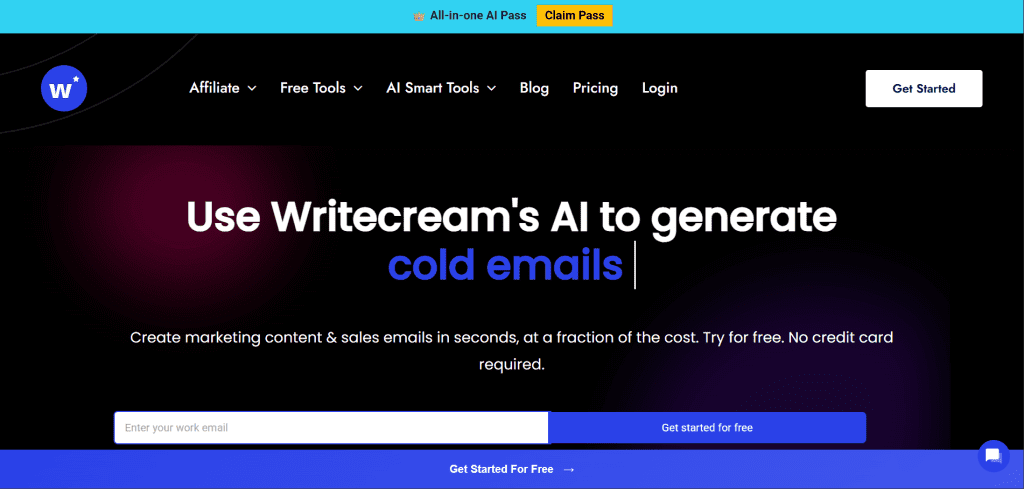
Creating advertising copy that actually converts requires understanding of psychology, persuasion techniques, and platform-specific best practices. Writecream’s Social Media Ad Copy Generator embodies this expertise, creating compelling copy that drives action rather than just engagement.
The platform excels at understanding the relationship between product features and customer benefits, automatically crafting messages that speak to audience pain points and desires. This psychological understanding, combined with platform-specific optimization, produces copy that feels personally relevant to readers while driving measurable business results.
For Facebook advertising specifically, Writecream’s Facebook Ad Copy Generator provides specialized optimization for Meta’s complex advertising ecosystem. The tool understands Facebook’s algorithm preferences, user engagement patterns, and conversion optimization strategies, creating copy that not only appeals to human readers but also performs well within automated bidding and optimization systems.
The platform’s ability to generate copy variations enables sophisticated A/B testing strategies that were previously accessible only to large advertising agencies. Small businesses can now test different emotional appeals, value propositions, and calls-to-action simultaneously, identifying winning combinations faster than traditional methods allow.
AI4Chat: Strategic Campaign Development
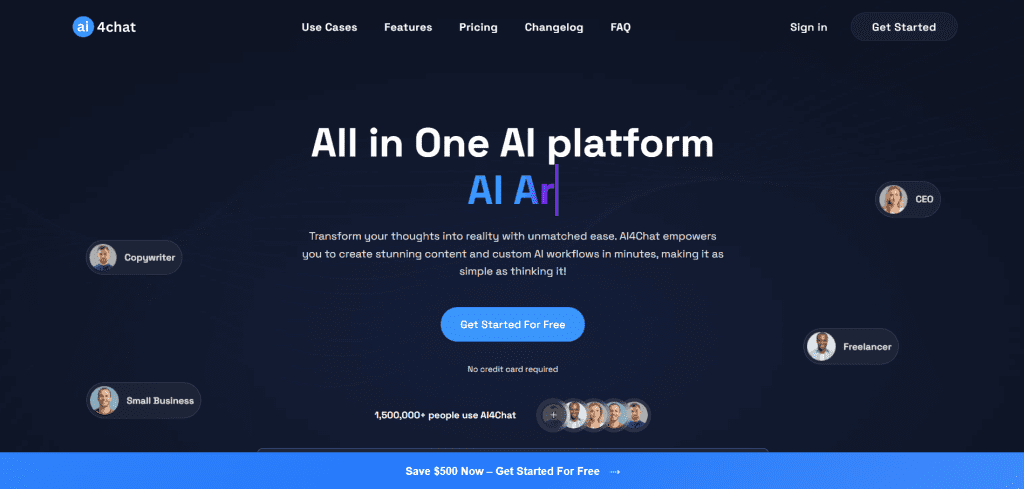
Beyond individual ad creation, successful advertising requires strategic thinking about campaign structure, audience targeting, and long-term brand building. AI4Chat’s diverse use cases demonstrate how artificial intelligence can support every aspect of advertising strategy development.
The platform functions as a strategic partner, helping marketers think through complex campaign challenges and identify opportunities they might not have considered. From competitive analysis to trend identification, AI4Chat provides the strategic intelligence that informs effective advertising decisions.
For businesses running multi-platform campaigns, AI4Chat helps maintain consistency while optimizing for each platform’s unique characteristics. The tool can adapt core campaign messages for LinkedIn’s professional audience, Instagram’s visual-first environment, or TikTok’s entertainment-focused user base.
Campaign planning and organization become much more sophisticated when AI can help identify optimal posting schedules, suggest complementary content themes, and even predict potential challenges or opportunities based on market analysis.
Airbrush AI: Visual Storytelling That Converts
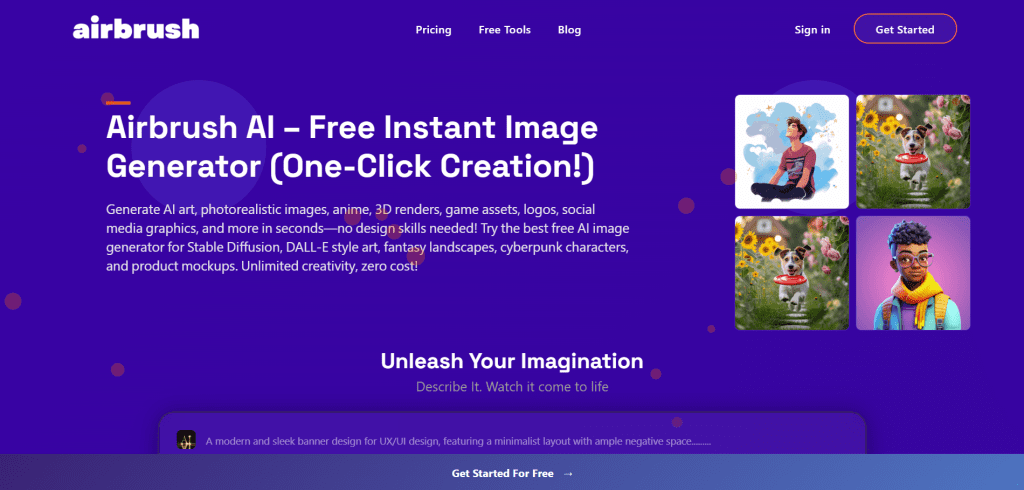
Advertising effectiveness increasingly depends on visual impact as social media platforms prioritize image and video content. Airbrush AI democratizes professional visual creation, enabling businesses to produce advertising imagery that competes with expensive agency work.
The platform understands that effective advertising visuals must balance aesthetic appeal with strategic messaging. Generated images incorporate proven design principles while supporting specific campaign objectives, whether building brand awareness, showcasing product benefits, or driving immediate sales actions.
For businesses without access to professional photography or stock photo budgets, Airbrush AI provides unlimited creative possibilities. Product mockups, lifestyle imagery, abstract concepts, and even custom illustrations become possible without specialized skills or expensive software subscriptions.
The tool’s understanding of current visual trends ensures that AI-generated advertising imagery feels contemporary and platform-appropriate. This cultural awareness helps small business advertising feel current and relevant rather than obviously AI-generated or out of touch with audience expectations.
FusionMindLabs: Converting Traffic Into Revenue
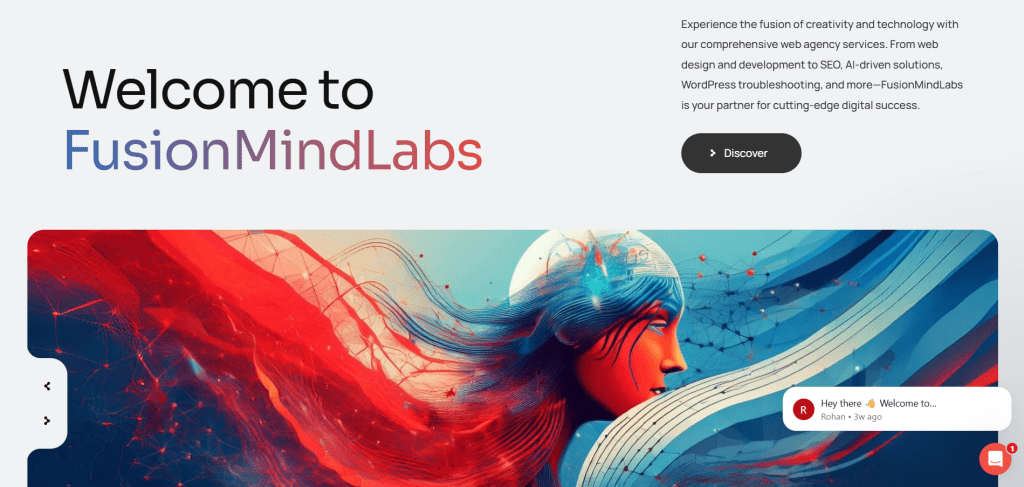
The most brilliant advertising campaign fails if the technical infrastructure can’t support conversion optimization and user experience excellence. FusionMindLabs provides the technical foundation that transforms advertising traffic into actual business results.
Successful advertising drives traffic, but successful businesses convert that traffic into customers through optimized landing pages, fast website performance, and seamless user experiences. FusionMindLabs specializes in creating these conversion-focused technical environments.
Their web development services ensure that advertising campaigns direct traffic to pages specifically designed for conversion optimization. This might include custom landing pages for specific campaigns, optimized checkout processes for e-commerce businesses, or lead capture systems for service providers.
WordPress optimization becomes crucial as AI tools make it easier to drive more traffic to your website. FusionMindLabs ensures that increased visitor volume doesn’t compromise site performance or user experience quality.
Server management and hosting solutions provide the reliability that allows businesses to pursue aggressive advertising strategies without worrying about technical limitations. When your AI-generated campaigns exceed expectations, your infrastructure needs to handle success gracefully.
Platform-Specific AI Advertising Strategies
Each social media platform has unique characteristics that affect advertising performance. Successful AI-powered campaigns account for these differences while maintaining brand consistency across channels.
- Facebook and Instagram advertising benefits from AI tools that understand Meta’s complex algorithm ecosystem. The platforms prioritize content that generates meaningful engagement and conversions, making copy and creative quality crucial for campaign success. AI tools that optimize for these factors help ensure advertising spend generates maximum return on investment.
- LinkedIn professional advertising requires content that balances authority with accessibility. AI-generated thought leadership content, industry insights, and professional development resources perform well on the platform while building brand credibility with business decision-makers.
- TikTok and short-form video platforms present unique creative challenges that AI is increasingly equipped to handle. From generating trending hashtag suggestions to creating video concepts that align with current platform culture, AI tools help businesses stay relevant in rapidly evolving entertainment-focused environments.
- Google Ads integration with social media campaigns creates comprehensive advertising strategies that capture customers at different stages of the buying journey. AI tools can create consistent messaging across search and social platforms while optimizing for each channel’s specific conversion characteristics.
Measuring AI Advertising Success
Traditional advertising metrics remain important, but AI-powered campaigns require additional measurement approaches to understand their true impact and optimization opportunities.
- Content performance analysis helps identify which types of AI-generated content resonate most strongly with your specific audience. This data informs future AI prompts and creative directions, creating a feedback loop that continuously improves campaign effectiveness.
- Cost efficiency measurements compare the total cost of AI-powered campaigns against traditional advertising development methods. Most businesses discover that AI tools dramatically reduce both time-to-market and total campaign costs while improving performance outcomes.
- Testing velocity metrics track how quickly your team can generate, test, and optimize advertising variations. AI-enabled rapid testing often identifies winning combinations much faster than traditional methods, allowing for more aggressive optimization and better resource allocation.
- Long-term brand impact assessment ensures that AI-generated advertising supports broader brand building objectives rather than just immediate conversion goals. This balance is crucial for sustainable business growth and customer relationship development.
Overcoming AI Advertising Challenges
While AI tools provide tremendous advantages, successful implementation requires understanding and addressing common challenges that businesses encounter during adoption.
- Brand voice consistency concerns arise when multiple AI tools generate content that might not perfectly align with established brand personality. Address this by developing clear brand guidelines and testing AI outputs against these standards before publication.
- Over-reliance on automation can lead to campaigns that lack the human insight and cultural awareness that drive truly memorable advertising. Use AI as a creative partner rather than a replacement for strategic thinking and brand intuition.
- Quality control systems become essential when AI tools dramatically increase content output volume. Establish review processes that ensure all published content meets your standards without slowing down the content creation advantages that AI provides.
- Integration complexity may challenge businesses trying to incorporate AI tools into existing marketing workflows. Start with simple use cases and gradually expand AI integration as your team develops expertise and confidence with the technology.
Advanced AI Advertising Techniques
As businesses become comfortable with basic AI advertising tools, advanced techniques can provide additional competitive advantages and campaign optimization opportunities.
- Dynamic content personalization uses AI to automatically adjust advertising messages based on audience characteristics, behavior patterns, or real-time market conditions. This capability enables highly targeted campaigns that feel personally relevant to each viewer.
- Predictive performance modeling helps businesses allocate advertising budgets more effectively by using AI to forecast which content types, platforms, or audience segments are likely to generate the best results for specific campaign objectives.
- Automated competitive analysis monitors competitor advertising strategies and suggests responsive tactics or identifies market opportunities that competitors haven’t yet recognized.
- Cross-platform campaign orchestration uses AI to coordinate messaging and timing across multiple advertising channels, ensuring consistent brand experiences while optimizing for each platform’s unique characteristics.
Building Long-Term AI Advertising Success
Sustainable success with AI advertising requires strategic thinking about how these tools support broader business objectives and customer relationship development.
- Customer journey integration ensures that AI-generated advertising content supports prospects through every stage of their decision-making process. This might include awareness-building content, consideration-stage education, and conversion-focused messaging that works together to guide customers toward purchase decisions.
- Brand building balance maintains focus on long-term brand development even while leveraging AI tools for immediate performance optimization. The most successful AI advertising strategies support both short-term conversion goals and long-term brand equity development.
- Continuous learning systems help businesses improve their AI advertising effectiveness over time. This includes analyzing performance data, refining AI prompts based on results, and staying current with new tool capabilities and platform changes.
- Team development investment ensures that human team members develop skills that complement AI capabilities rather than compete with them. This includes strategic thinking, creative direction, customer psychology understanding, and data analysis capabilities.
The Future of AI in Advertising
Looking ahead, several trends will shape how AI continues transforming advertising creation and optimization processes.
- Voice and audio content generation will expand AI capabilities beyond text and images to include podcast advertising, voice search optimization, and audio branding elements.
- Interactive advertising creation will enable AI tools to generate dynamic, engaging advertising experiences that adapt based on user interaction and engagement patterns.
- Real-time optimization algorithms will continuously adjust campaign parameters based on performance data, market conditions, and competitor activities without requiring manual intervention.
- Advanced analytics integration will provide deeper insights into campaign performance, customer behavior, and market opportunities through AI-powered data analysis that identifies patterns human analysts might miss.
Conclusion: Seizing the AI Advertising Opportunity
The advertising landscape has been permanently transformed by artificial intelligence. Small businesses now have access to capabilities that were once exclusive to major brands with unlimited budgets and dedicated creative teams.
The tools exist—Writecream for compelling copy, AI4Chat for strategic development, Airbrush AI for professional visuals, and FusionMindLabs for technical excellence. The strategies are proven, and early adopters are already seeing remarkable results.
The question isn’t whether AI will change advertising—it already has. The question is whether you’ll use these tools to build competitive advantages or struggle to catch up as your competitors pull ahead.
Your customers are already being influenced by AI-generated advertising from your competitors. The businesses that win will be those that combine AI efficiency with authentic brand storytelling, creating advertising that’s both technically optimized and emotionally compelling.
The future of advertising belongs to those who can harness artificial intelligence while maintaining the human insight that makes marketing truly powerful. The tools are ready. The opportunity is here. Your competitive advantage is waiting to be built.


